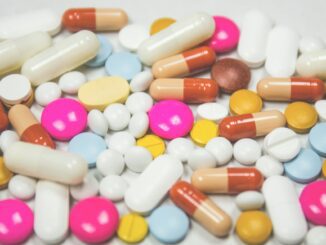
There is a rising concern in South Africa pertaining to substance abuse among young people. This article will discuss four contributing Factors that may lead to an increase of learners abusing substance in schools.
The abusing of substances affects young learners and their general well-being while having long-term detrimental consequences on their mental and physical wellbeing. Identifying the factors that cause such abuse is crucial for initiating effective preventative measures.
What causes learners to abuse substance in school?
According to Sabinet African Journals the abusing of substances among leaners remain a growing issue in South Africa. Some of the school premises are infiltrated with different varieties of drugs. This means that the number of students engaging in abusing drugs is a growing number. Some of the contributing factors that lead to substance abuse in South African schools include:
- Family history of substance use
- Favourable parental attitudes towards the behaviour
- Weak Parental bonds
- Poor parental monitoring
- Parental substance use
- Family rejection of sexual orientation or gender identity
- Association with delinquent or substance using peers
- Lack of school connectedness
- Low academic achievement
- Lack of Education and Awareness
- Childhood sexual abuse
- Mental health issues
- Parental neglect
- Lack of moral values
- Loneliness
- Rejection
Substances commonly abused by students in schools
These issues of substance abuse and addiction to drugs are a dangerous complex which brings challenges that affects children. Abusing drugs and alcohol at a young age also modifies the developing brain hindering cognitive function and negatively influencing physical health.
There are a number of reasons as to why young learners maybe drawn to drugs and why there is a high likelihood of adolescents being drawn to drugs. According to the National Institute of Health (NIH) the following substance are commonly used by teens and adolescents in South Africa:
- Alcohol
- Marijuana
- Heroin
- Nicotine
- Adderall
- Opioids
- Tranquilizers
- Spice/K2
- Hallucinogens
- Inhalants
- DXM
- Oxy Contin
- Spice/K2
- Hallucinogens
- Cannabis
- Cigarettes
- Grass
- Boom
- Joint
- Zol
- Weed
- Hash
- Pot
Negative Consequences due to Substance Abuse among Learners
According to the South African Government, many young people who continuously abuse substances often experience a range of problems which consist of:
- Unplanned sexual activity
- Sexually transmitted diseases
- academic difficulties
- poor peer relationships,
- involvement with the juvenile justice system
- Depression
- Cancer
- Suicide
- Personality disorders
- Homicides
- School dropouts
- Unemployment
- Crime
- HIV/AIDS
- Tuberculosis
- Cardiovascular diseases
- Increase in Crime
- Increase in Aggression and Violence
Four contributing Factors that increase learners abusing substance in
Schools
The problem of substance abuse in South African schools is a problem that has negative effects on both the school environment and student academics. This article will discuss four contributing Factors that may lead to an increase of learners abusing substance in schools. These are some of the factors that increase learners abusing substance in schools which includes:
Peer pressure
This is one of the main factors that contribute to an increase of substance abuse among young learners. The most vulnerable to this are adolescents as their draw influence from their peers where an increasing number of their peers engage in substance abuse.
This also creates an environment where substance abuse become normalised and also encouraged among student circles and each other.
Lack of parental supervision and support
A lack of parental supervision and support has also being reported as one of the main contributing factors that leads to young learners abusing substances. This increases their likelihood to engage themselves in risky behaviours.
It is the reason why parents play a fundamental role in setting boundaries, educating children against using drugs and raising awareness at home on its negative impacts and long term consequences. The right support and guidance from parents can alter the lives of children in the right direction.
Stress and mental health issues
There are other stressors that can propel a student towards abusing substances such as academic pressures, social challenges increasing contribute to substance abuse. Students turn towards abusing drugs as a coping mechanism for anxiety, stress and mental health issues.
Supporting children’s mental health is something that schools should prioritise and provide students that are struggling with the necessary resources to manage and cope with stress in healthy ways.
Accessibility of substances
Among the many factors that increase learners abusing substance in schools, the easy access to substances is also a contributing factor. When varieties of drugs and alcohol are widely available to access near learning environments, students are more likely to experiment.
Schools should implement stringent policies pertaining to the possession and use of substances on school grounds. They should also collaborate with parents, community organisations, and law enforcement in order to limit the accessibility of students to such substances.
Conclusion
There is an increase in substance abuse among young learners in schools which is a growing issue. These students are driven by a diverse array of factors such as peer pressure, parental supervision, stress, and accessibility to substances.
Addressing these factor require collective effort from educators, parents, community leaders, law enforcement officers and policy makers. Increasing supervision and monitoring mechanisms in schools, raising awareness through school programs and providing comprehensive education can curb this alarming issue.
Key Points
- Peer influence significantly contributes to substance abuse among young learners, especially as they are easily swayed by the behaviours of their peers.
- Parental supervision and support play a crucial role in preventing substance abuse, as engaged and vigilant parents can guide children away from risky behaviours.
- Students often turn to substances to cope with stress and mental health issues, using drugs and alcohol as a means to manage anxiety and academic pressures.
- Easy access to drugs and alcohol increases the likelihood of substance abuse among students, particularly when these substances are readily available near schools.
- Schools need to implement stricter policies and collaborate with parents, community organizations, and law enforcement to reduce substance accessibility and protect students.
FAQs
Which drugs are commonly used in South African schools and why is that drug common?
One of the most commonly found drugs among South African students in school is Daga while tik (Methamphetamine) and cocaine are easily available. Nyaope use, which is a mixture of heroin and other substances, is also another South African problem drug that is on the rise and very popular among students abusing drugs.
What are the 5 substances that can be abused by children?
Adolescents abuse cheap and inexpensive drugs; however there are popular substances among students such as alcohol, tobacco products, over-the-counter (OTC) pharmaceuticals, marijuana, and inhalants. Alcohol out of all these is the most commonly abused substance among young people.
What are the 4 patterns of substance abuse?
When it comes to abusing patterns it differs from individual to individual. Some take their time while it’s radical for others. There are four stages of drug addiction according to rehabilitation counsellors they are: experimentation, regular use, risky use/abuse, and drug addiction and dependency.
What is the four factor model of addiction?
There are four personality-related pathways to substance abuse and misuse. This is associated with the personality traits of impulsivity, sensation seeking, hopelessness and anxiety sensitivity, are proposed.

